Teddy Bear Hamster Care 101: Food, Habitat, Health, and Facts
Thinking about bringing home a fluffy, cuddly Teddy Bear hamster? Well, you’re in for a delightful and heartwarming experience. These adorable pets may be small in size, but they’re big in personality. As such, they can bring joy to your life if you know how to correctly care for them.
But how do you care for them? You simply give them good food, keep their habitat clean and their water fresh, and always be on the lookout for any changes in behavior.
Just keep reading till the very end. Our comprehensive guide here on teddy bear hamster care will equip you with everything you need to know about caring for these charming little creatures. So, without further ado, let’s dive into the fascinating world of Teddy Bear hamsters!
Interesting & Must-know Facts of Teddy Bear Hamsters
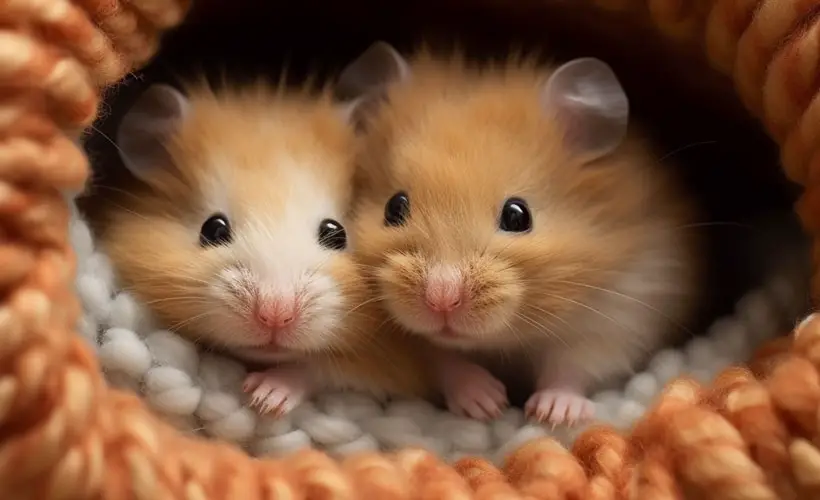
First off, let’s check out some unique and interesting facts about Teddy Bear Hamsters and their care:
- Solitary creatures: Teddy Bear Hamsters are solitary animals and prefer to live alone.
- Nocturnal habits: These hamsters are primarily nocturnal, meaning they are most active during the night.
- Cheek pouches: Teddy Bear Hamsters have expandable cheek pouches that allow them to carry food and bedding material back to their nest.
Not only that, they can store an impressive amount of food in these pouches, sometimes equal to their body weight. - Scent glands: Male Teddy Bear Hamsters have scent glands on their hips, which they use to mark their territory. They may rub these glands against surfaces in their enclosure, leaving a scent trail.
- Dust baths: Teddy Bear Hamsters can benefit from occasional dust baths to help maintain the health of their fur.
- Dental care: Hamsters’ teeth grow continuously and never stop growing.
- Lifespan and Breeding: With proper care, Teddy Bear hamsters have an average lifespan of 2-3 years.
They reach sexual maturity at just 4-5 weeks old, as suggested in an animal husbandry instruction by University of Kentucky.
Now that you’re familiar with the background and characteristics of Teddy Bear hamsters, let’s explore the essential aspects of their care.
Food and Nutrition
Providing your Teddy Bear hamster with a well-balanced diet helps maintain a strong immune system and reduces the risk of illness.
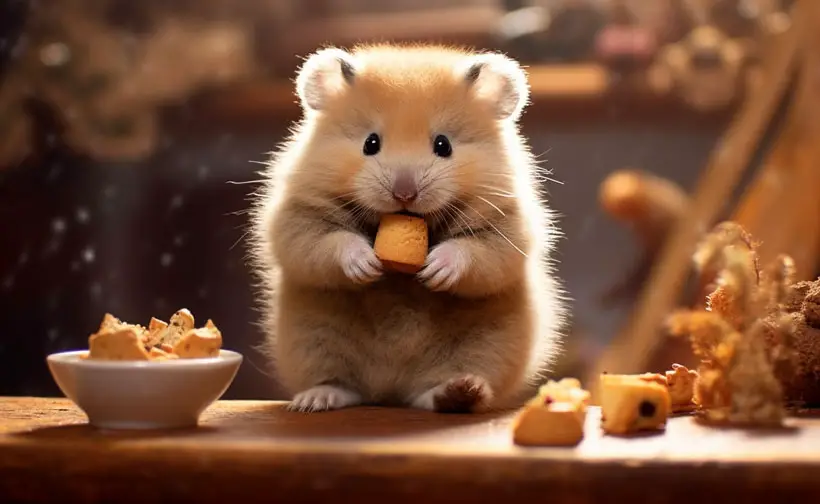
A. Importance of a Balanced Diet
A good diet promotes optimal digestion and supports a healthy coat, sharp teeth, and strong bones. It ensures your hamster receives all the essential nutrients, vitamins, and minerals it needs to stay healthy and maintain a proper weight.
B. Recommended Diet Components
Here’s a quick overview of the key components that should be included in your Teddy Bear hamster’s diet:
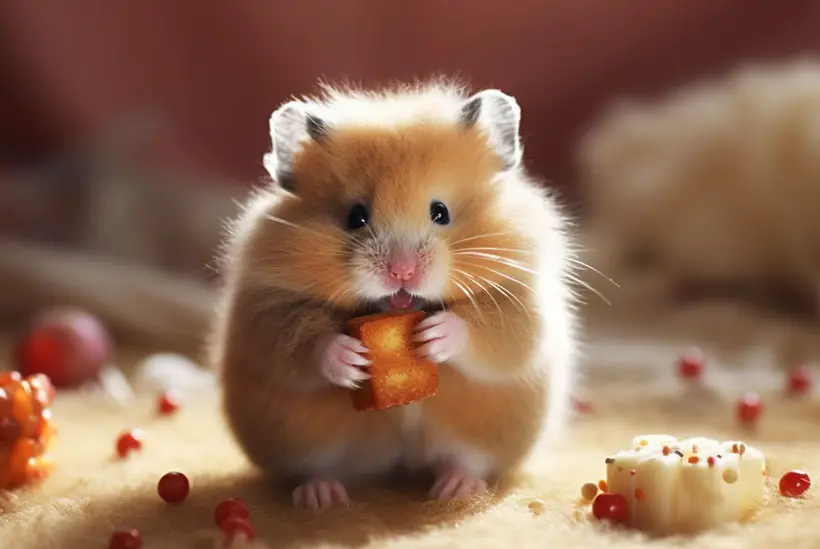
Commercial Hamster Food
High-quality, commercial hamster food should make up the majority of your hamster’s diet. Look for a mix that contains a variety of ingredients, such as pellets, seeds, grains, and dried vegetables. It will encourage a well-rounded intake of nutrients.
Be cautious of “selective feeding” where your hamster only picks out their favorite bits, leaving the healthier options behind. To avoid this, opt for pelleted food that ensures they get all the nutrients in each bite.
Fresh Fruits and Vegetables
Introduce new fruits and vegetables gradually to avoid upsetting their stomach. Supplement your hamster’s diet with small amounts of fresh fruits and vegetables, providing them with essential vitamins and minerals.
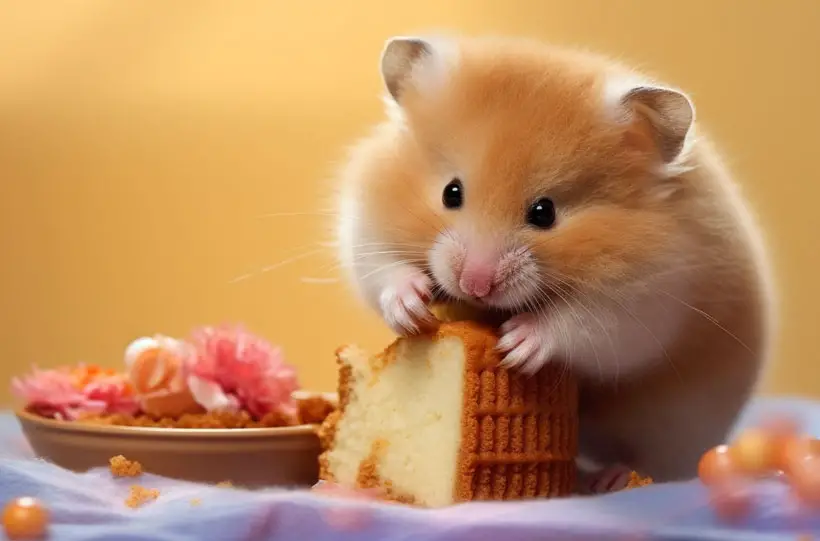
So the safe options include apples, pears, carrots, cucumber, and broccoli. But always remove the seeds and wash the produce thoroughly before feeding.
Protein Sources
The National Institutes Of Health suggests Teddy Bear hamsters require a small amount of protein in their diet (at least 18%). This can be provided through insects, cooked plain chicken, or tofu. Offer these protein sources in moderation, once or twice a week, as too much protein can cause health issues.
Water
Fresh, clean water should be available to your hamster at all times. Use a water bottle with a metal sipper tube to prevent spills and contamination. Ensure the water is changed daily and the bottle is cleaned regularly.
C. Foods to Avoid
Some foods can be harmful or toxic to hamsters, such as onions, garlic, chocolate, and avocado. Avoid feeding your hamster any sugary or high-fat treats, as well as salty or processed human foods.
D. Feeding Schedule and Portion Sizes
Establish a routine feeding schedule for your hamster, ideally in the early evening, when they’re most active.
Provide a daily portion of commercial food, roughly one tablespoon, and offer fresh fruits or vegetables every other day in small quantities.
Regularly check for and remove any uneaten food to prevent spoilage and maintain a clean habitat.
Habitat and Housing
In the wild, teddy bear hamsters inhabit a semi-desert environment with rocky terrain and sparse vegetation. They are primarily burrowers, creating complex underground tunnel systems where they can nest, sleep, store food, and hide from predators.
So, when providing suitable habitats for them, it’s essential to mimic their natural environment as closely as possible.
Let’s break down the key factors to consider when setting up your hamster’s new home:
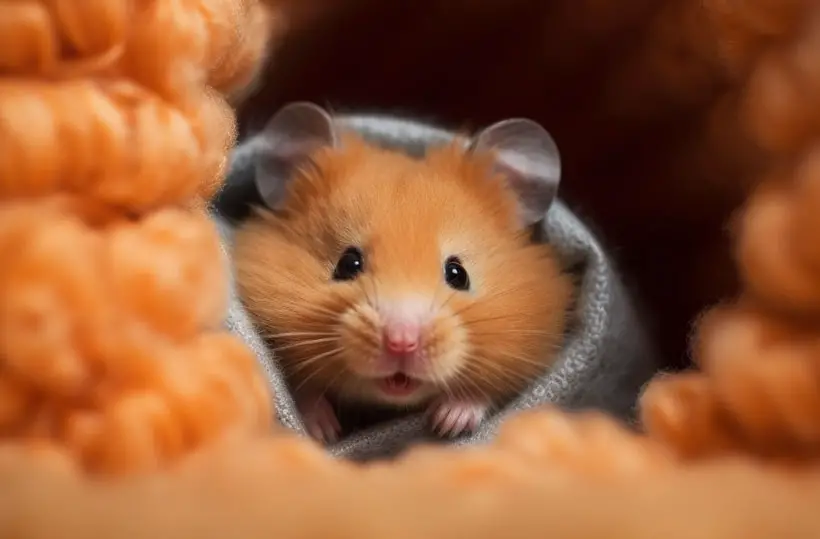
A. Choosing the right cage
Since the cage of your hamster is going to be its safe abode, you have to be careful when picking the right cage. And in this case, some important stuff should be taken into account, such as:
Size and space requirements
The minimum cage size for a single hamster should be at least 24 inches long, 12 inches wide, and 12 inches high. Keep in mind that bigger is always better when it comes to hamster housing. So, if you can provide more space, your hamster will definitely appreciate it.
Material and construction
There are several cage materials to choose from, such as wire, plastic, and glass.
- Wire cages are the most common and provide excellent ventilation. However, make sure the bars are close enough together to prevent your hamster from escaping.
- Plastic cages or modular habitats can be easily expanded and are fun to watch, but ensure proper ventilation.
- Glass aquariums with mesh lids are another option. They’re escape-proof and easy to clean. But they can be heavy and less ventilated.
Ventilation and safety
Good airflow is crucial to prevent respiratory issues in hamsters. Apart from this, always check for any sharp edges or broken parts that your hamster might get injured on when trying to escape through.
B. Essential cage accessories
The following accessories should be in your mind when you set the cage.
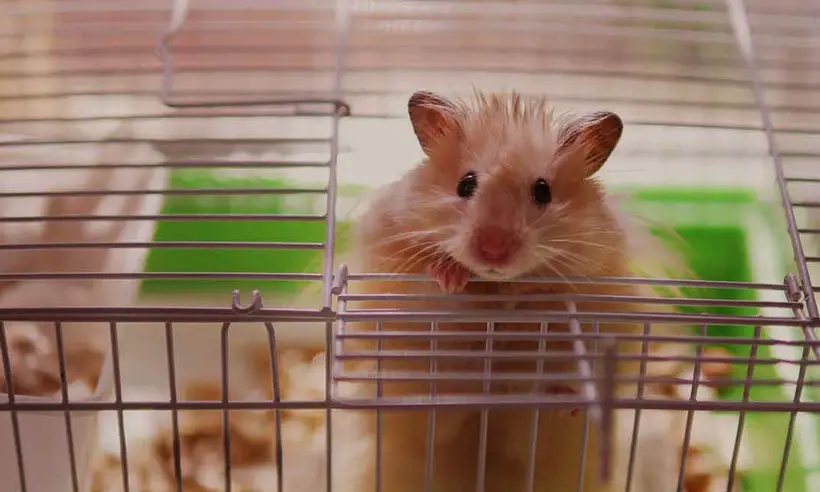
Bedding material
Use aspen shavings, paper-based bedding, or even shredded tissue paper for bedding. Provide a 2-3 inch layer of bedding for burrowing and nesting.
Hideout and nesting area
Hamsters need a safe place to hide and sleep. Provide a small hideout, such as a wooden house, ceramic cave, or even a simple cardboard box.
Exercise wheel
A solid exercise wheel should be provided in the cage. Make sure it’s large enough so that your hamster’s back doesn’t arch while using it.
Toys and entertainment items
Teddy bear hamsters are curious and love to explore. So, offer a variety of toys such as tunnels, wooden chew toys, and ladders to keep them entertained.
C. Cleaning and maintenance
Cleanliness will be the main determinant for your hamster’s health. So, check out the following:
Regular cleaning schedule
Keep your hamster’s habitat clean by removing soiled bedding and uneaten food daily.
Deep cleaning and disinfection
Once a month, carry out a thorough cleaning of the cage. Remove all the bedding and accessories and wash the cage with warm, soapy water. Besides, choose to rinse well, dry, and then apply a pet-safe disinfectant.
Health and Wellness
In this section, we will discuss the various aspects of health and wellness that you should be aware of (as a teddy bear hamster owner).
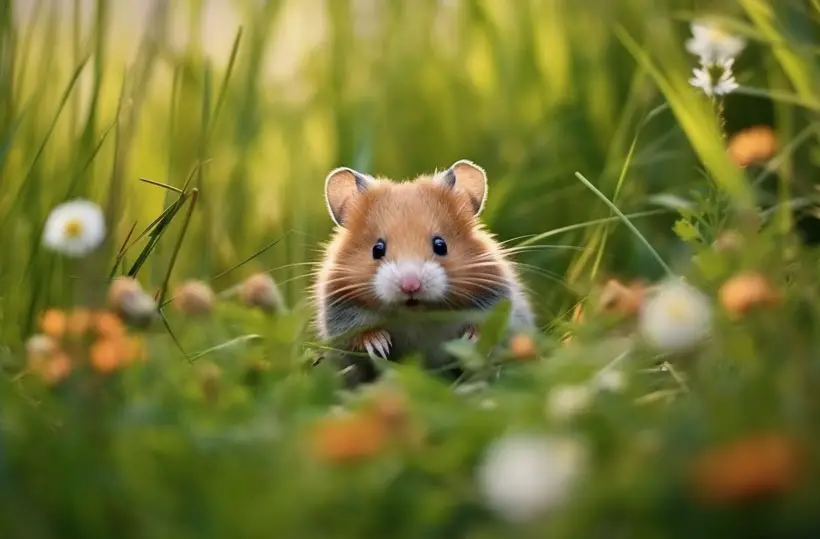
A. Common health issues and prevention
Keep an eye out for the following health issues in your hamster:
Respiratory infections
Teddy bear hamsters can be prone to respiratory infections. This can result in wheezing, difficulty breathing, and nasal discharge.
To help prevent this, ensure that their living environment is clean and well-ventilated. Use dust-free bedding and sudden temperature changes.
Wet tail
This is a potentially fatal condition in which your hamster experiences severe diarrhea. Stress, poor hygiene, and an inappropriate diet are common culprits for this.
So, make sure your hamster has a clean-living environment, and be cautious when introducing new foods to their diet. If you notice any signs of wet tail, seek veterinary care immediately.
Dental issues
As already said above, hamsters’ teeth never stop growing, so dental issues can be a common problem. Hence, you should provide wooden chew toys or other safe materials to help wear down their teeth and prevent overgrowth.
Parasites and skin conditions
Hamsters can be susceptible to parasites like mites or fleas and may also experience skin conditions like dermatitis or fungal infections.
Keep their habitat clean. And if you notice excessive scratching or hair loss, it’s time to consult your veterinarian.
B. Grooming and hygiene
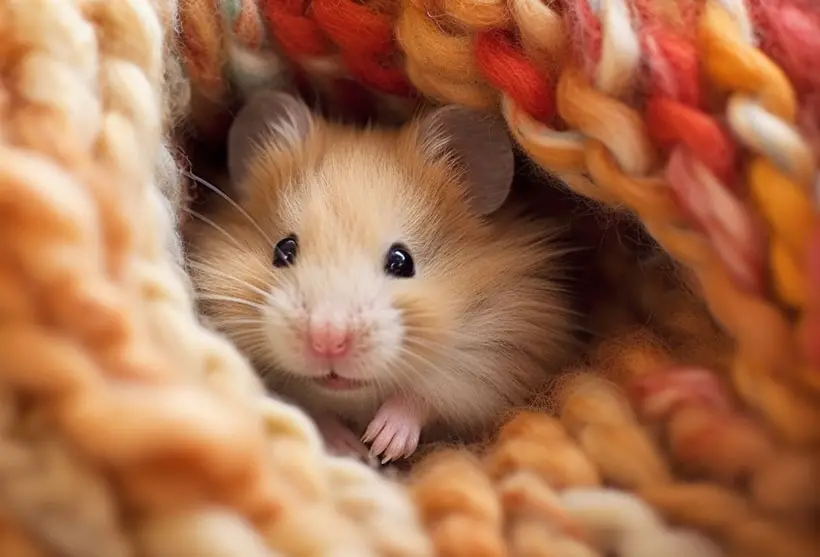
Hamsters care about hygiene, and so should you as its owner.
Self-grooming behavior
Teddy bear hamsters are quite fastidious creatures and will groom themselves. You might catch them licking their fur or using their paws to clean their face. This is completely normal behavior and a sign of a healthy hamster.
Assistance with grooming
Sometimes, your hamster might need a little help with grooming, especially if they have long fur. Gently use a soft-bristled brush or a flea comb to help them remove any tangles, dirt, or debris that may have gotten caught in their fur.
Nail trimming
Overgrown nails can cause discomfort or injury, so keep an eye on their length. If your hamster’s nails need a trim, use a small pair of nail clippers designed for small animals.
C. Regular health check-ups
Checking the health condition of your hamster is crucial for preventing unforeseen health complications.
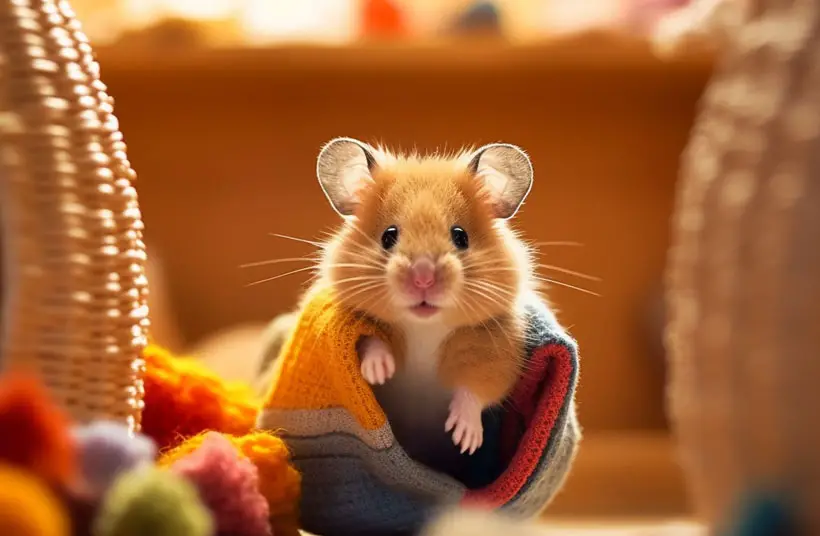
Monitoring weight and appetite
Weigh your hamster weekly. If you notice sudden weight loss (going below 100 grams/3.5 ounces) or gain, or a decreased appetite, consult your veterinarian.
Observing behavior and activity levels
Normal hamster behavior includes exploring their habitat, exercising, and grooming. If your hamster becomes lethargic or unresponsive, you should check for any potential health concerns.
If you’re interested in Teddy Bear hamster care, you might also find our articles on Winter White dwarf hamster lifespan and Teddy Bear hamster lifespan helpful. Our article on Winter White dwarf hamster lifespan provides insights into their average lifespan and factors that can affect it. Additionally, if you’re curious about the lifespan of Teddy Bear hamsters, our article on Teddy Bear hamster lifespan offers information on their lifespan and tips for promoting their well-being. By exploring these articles, you’ll gain a better understanding of the lifespan of Winter White dwarf hamsters and Teddy Bear hamsters, as well as their specific care requirements.Frequently Asked Queries
Let’s check out some common questions people often ask regarding Teddy bear hamster care.
Q: How to make a Teddy Bear hamster happy?
To make a teddy bear hamster happy, provide it with a large cage, a wheel to run on, plenty of hiding spots, toys to play with, and a healthy diet of fresh food and water. Moreover, interact with the hamster regularly for bonding and exercise, and keep its living environment clean and safe.
Q: Do hamsters like watching TV?
Hamsters do not watch TV in the same way that humans do. They do not have the capacity to understand or recognize images on a screen.
However, they can be entertained by the movement and sounds coming from a TV. Especially if it is accompanied by human interaction and playtime. Remember, hamsters are social animals and enjoy spending time with their owners.
Q: How to clean a Teddy Bear hamster?
To clean a Teddy Bear hamster, use a damp cloth or a pet-safe wet wipe and gently wipe its fur. Remember to avoid its face and eyes. And handle the hamster gently and avoid using any harsh soaps or shampoos, as they can be harsh and irritate the hamster’s skin. You may use baby soap or shampoo.
Conclusion
Let’s wrap up our delightful journey through the enchanting world of Teddy Bear Hamster care. Here, we’ve explored crucial aspects of Teddy Bear Hamster care and the importance of regular health checkups. In essence, you must remember to keep their habitat clean and their water fresh and always be on the lookout for any changes in behavior or appearance.
As your hamster grows and changes, so too will your relationship with them. So, embrace this journey, and cherish the moments you spend with your little bundle of joy. And remember: even the most seasoned pet owners are always learning, so never be afraid to ask questions or seek guidance. Happy hamster-ing!!!





